News
-
5 September 2022
Special Issue "Advances in Organic Semiconductors: Materials, Devices, and Applications"
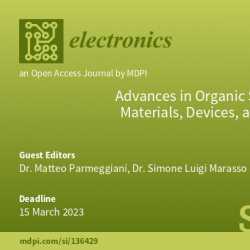
A special issue of Electronics (ISSN 2079-9292).
Deadline for manuscript submissions: 15 March 2023
Dear Colleagues,
Over the past several decades, the field of organic semiconductors has grown to become a large research area. The possibility of tailoring material properties via careful molecular design has attracted strong interest in the research community. This has led to the development of devices such as organic light-emitting diodes, photovoltaic solar cells and transistors. An eminent example is the area of organic bioelectronics, where biosensors, biocompatible implantable electrodes and neuromorphic devices have demonstrated great success in the last decade. The additive manufacturing of organic semiconductors is also a growing research field, pushed by the concomitant development of 3D-printing technologies.
The purpose of this Special Issue is to cover some of the new research on organic semiconductors, concerning the design of the devices and the development of novel applications, along with advances in material processing. This Special Issue provides a chance to capture the latest advances, propose new exciting challenges, and disseminate innovative studies and breakthrough
discoveries on organic semiconductor devices.Dr. Matteo Parmeggiani
Dr. Simone Luigi Marasso
Guest Editorshttps://www.mdpi.com/journal/electronics/special_issues/4S3LMQ3296
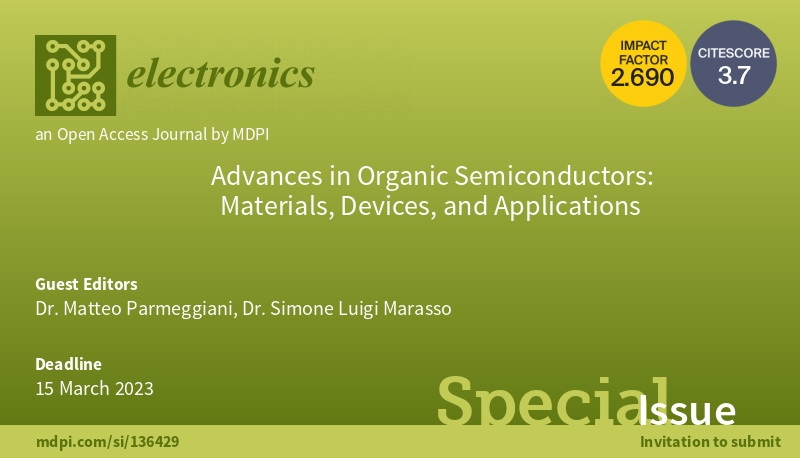
-
9 December 2021
ALBEROFLUIDICS @ ChiLab

Conventional microfluidic devices are generally driven by peripheral accessories. Most of such kinds of stuff make the whole experiment setup bulky, cumbersome, unstable, and complex which all are serious challenges along with the point-of-care paradigm.
Pumpless microfluidics is a type of microfluidic device which operates without the need for an external power source. The underlying driving systems of such platforms empower on some phenomena like capillarity and wettability which both are inspired by some events which occur inside the plant vessels, for instance in the Trees.
Our Group is working on capillary-based pumpless microfluidics and developing standalone simplified microfluidic devices.
Approaching Christmas, enthusiasm has sparked in our mind to realize a pop-up concept inspired by the Christmas tree which is called "Albero di Natale" (as in the Italian translation). We accordingly proposed the abbreviated name of "ALBEROFLUIDICS" for the materialized concept of fancy microchip as a holy initiation for the adventure of the Pumpless microchip paradigm.
(Design & Manufacturing by Behrouz Aghajanloo)
-
12 November 2020
SiComb (CMOS compatible and ultrabroad-band on-chip SiC frequency comb) Kick-Off Meeting

Towards a new era of optical communications
Framework: Call: H2020-FETOPEN-2018-2020 – Topic: FETOPEN-01-2018-2019-2020: FET-Open Challenging Current Thinking
Partners: Politecnico di Torino - Italy, Riedrich-Alexander-Universitaet Erlangen-Nuernberg - Germany, Mellanox Technologies Ltd - Israel, Moverim Consulting sprl - Belgium, Alminica Ab - Sweden, Centre National de la Recherche Scientifique CNRS - France.
On October 22, 2020, SiComb partners met online to officially kick-off a new research and innovation project, led by Haiyan Ou from Danmarks Tekniske Universitet and funded by the FET Open scheme of the European Union’s Horizon 2020 programme. Under the title “CMOS compatible and ultra-broadband on-chip SiC frequency comb (SiComb)”, this project gathers seven partners from both academic and industrial sectors aiming to demonstrate for the first time an on-chip Silicon Carbide frequency comb.
Silicon Carbide (SiC) material is abundant, and processing is complementary metal-oxide-silicon (CMOS) compatible. Thanks to the wide bandgap and exceptional nonlinear optical properties, the SiC frequency comb light source will cover ultra-wideband from near-ultraviolet to middle infrared where disinfection, lighting, communication, biosensing and gas sensing have an individual footprint, some of which is not covered by the standard lasers yet. Moreover, SiC in itself is environmentally friendly, biocompatible and shows an extended device lifetime and efficiency. Thus, the participants expect that there is potential for a breakthrough in the field of optical communications.
The impacts of this technology are multifold: space-saving, energy-saving and bigger data transmission capacity. With bigger data transmission capacity, the facilitated Multi-media online education will address the quality education goal listed in the sustainable development goals of United Nations and energy saving will mitigate and reduce the current 10% electricity consumption in internet business.
In this ambitious 3-years project with an overall budget of 3 million euros, an interdisciplinary consortium with complementary strengths on SiC material growth, device nanofabrication, nonlinear optics and optical communication systems, will collaborate to demonstrate the non-incremental and ground-breaking ultra-broadband SiC frequency comb chips, with synergy effect at European level.
These results will build leading research and innovation capacity on SiC optical devices and applications across Europe and enhance the competitiveness and growth of industrial partners. It will also align with European advancement in frequency comb efforts, as well as innovation competence to position Europe at the forefront of technologies in the research and innovation. The future market implementation and utilization are expected to have a strong momentum given by the results and stakeholder establishment in the SiComb project.
-
13 May 2020
PhD Position available for candidates with a Master Degree received from a not Italian University
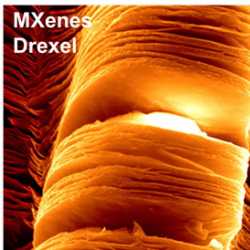
PhD Position available in ELECTRICAL, ELECTRONIC AND COMMUNICATION ENGINEERING for candidates with a Master Degree received from a not Italian University
Reference teachers at the Polytechnic of Turin:
PIRRI CANDIDO FABRIZIO (fabrizio.pirri@polito.it)
COCUZZA MATTEO (matteo.cocuzza@infm.polito.it)
PhD Program in collaboration with Université Grenoble-Alpes, Grenoble INP (PHELMA), FRANCE (reference teacher THIERRY OUISSE (thierry.ouisse@grenoble-inp.fr) Laboratoire des Matériaux et du Génie Physique (LMGP)
This proposal belongs to micro and nanotechnology domain and is motivated by the recent discovery of two-dimensional (2D) materials called MXenes. Their exceptional properties (high conductivity, chemical stability, hydrophilicity) and their number make them a unique family of 2D materials. Their solubility in water and organic solvents, the simplicity of surface functionalization and their stability have made possible applications as supercapacitors with record performance, measuring electrodes, etc. Their ease of use allows the implementation of low cost processes.
Through the work of the PhD student and the collaboration between the aforementioned Institutes, we intend to demonstrate the feasibility of applications not yet exploited for the MXenes: (1) MXene-polymer composites obtained by 3D Printing and Electrospinning techniques and (2) gas sensors and biosensors (detection of low concentration circulating markers specific for cancer). These applications belong to very different domains, but actually involve common processes. The advantages of applying MXenes in terms of costs and performance will be demonstrated.
MXenes are synthesized from nanolamellar materials called MAX phases, with the formula Mn + 1AXn. M is a transition metal, A an element of columns 13-16 and X = C or N. In 2011 at Drexel Univ., M. Barsoum (participant in the project) and co-inventors discovered that the immersion of the phases containing Al in HF leads to the elimination of aluminum atoms and a 3D-2D transformation. These 2D materials were called MXenes to identify the loss of element A and by analogy with graphene. They are now recognized as members of the 2D material family. They stand out because they are: (1) good metallic conductors, (2) have very different compositions and easily modifiable by means of a suitable surface chemistry, (3) they are exceptionally rigid, (4) they can be hydrophilic or hydrophobic after suitable surface functionalization, (5) they are stable. They are easily managed in solution (including water), which favors low-cost applications and environmentally friendly processes.
About six years after their discovery, about twenty compounds have been synthesized. Unlike graphene, their exfoliation produces unsaturated bonds that allow surface functionalization through T terminations, and their stoichiometry is therefore Mn + 1CnTx.
The MXenes constitute the fundamental basic elements of various applications: thanks to the large surface/volume ratio, supercapacitors with practically record values (> 1000 F/cm3), exceptional electromagnetic shielding in aqueous solvent-based paints, electrodes for lithium-ion batteries, transparent conductors, sensors, etc. Research is growing exponentially. Useful applications not covered in previous works will therefore be developed, having as a guideline the systematic search for low-cost processes and the choice of applications with high social impact:
1) applications for hostile/extreme environmental conditions and high added value (oil, aeronautics and aerospace industry) through additive manufacturing and/or nanostructuring of MXenes/polymeric composite materials to print complex 3D objects with thermal, electrical, electrochemical, electromagnetic shielding,…
2) gas sensors and biosensors: functionalizable electrodes for the selective detection of low concentration and cancer specific circulating markers (such as miRNA, exosomes and oncosomes), functional filters and electrodes with a high active surface in the form of polymer composite nanofibers/MXenes obtained by electrospinning.
Our main objective is to develop the appropriate technological processes to establish the feasibility of applications based on MXenes not covered by previous works, keeping as a guideline the systematic search for low cost processes and the choice of high social impact applications.
The geographical proximity between PoliTo and INPG will facilitate the organization of short stays for the PhD student, according to the needs of the project.
In addition to the basic scientific interest related to the properties of the MXenes, the proposed project will also explore some technical-scientific applications with potentially disruptive results. Some of the applications identified represent a totally virgin territory (3D printing of composite materials), others have been the subject of preliminary research (electrospinning of composite materials), others have been widely studied (energy storage applications) but only to identify the limits of efficiency and performance of materials and not the most challenging niche applications (hostile environmental conditions and high temperatures), while others have seen the publication of relatively simple technological exercises.
Finally, the combination of MXenes with polymers to create composite materials with completely new and widely modular properties, will open the way to contribute to the development of new ideas and applications, therefore going beyond the examples identified in this project.
Further info:
- the net year salary is about 17000 euros
- the PhD thesis will be performed at Polytechnic of Turin (Italy), with a possible visiting period of max 6 months in Grenoble INPG
Candidate Requirements:
- the master degree should be obtained before October 30th, since the Phd will start November 1st
- the candidate must submit his/her candidature to the PoliTo Scudo site before the deadline, that is to say September 9th (all details at http://dottorato.polito.it/en/call_for_applications).
- Documents to be prepared for the application: Bachelor and Master Degree title documents, list of exams, grades and dates, abstract of Master Thesis, Short Statament Of Purpose (SOP), publications, two referees names (all details at http://dottorato.polito.it/en/call_for_applications).
- Foreign applicants must have already obtained a valid GRE® (Graduate Record Examinations) General Test by the application deadline (September 9th).
- All candidates are required to prove their knowledge of the English language by showing one of the following English language certificates. Certificates are valid regardless of when they were obtained. Certificates which are not listed below will not be accepted as proof of knowledge of the English language.
- IELTS: minimum score 5.0;
- one of the language certificates accepted in substitution for IELTS 5.0 by Politecnico di Torino and listed in the table “B2 English language level during a transitional period” available at https://didattica.polito.it/cla/en/certificates
Applicants with a Bachelor’s or a Master’s degree awarded by a university where English is the medium of instruction are exempted from presenting any English language certificate. In this case, the university must specify that “The medium of instruction is English”.
Also applicants who do not have an English language certificate can submit their application, but in this case they will be admitted to the selection process “with condition” and must present one of the above-mentioned certificates upon enrolment and absolutely no later than 31 October 2020. Failure to do so entails that they will not be admitted to the PhD program.
-
15 June 2018
Agreement for the safety of hydrocarbon extraction offshore platforms

June 7, 2018
The Polytechnic of Turin and the General Directorate for Environmental Safety and Safety of Mining and Energy (DGS-UNMIG) of the Ministry of Economic Development (MISE) today signed an agreement for the foundation of the "SEASTAR Competence Center - Sustainable Energy Applied Sciences, Technology and Advanced Research", a multidisciplinary center that will carry out studies, research and technological innovation in the field of safety, including environmental safety, of plants for research and cultivation of hydrocarbons at sea.
The primary objective of the Center, which will be esatblished within the Environmental Park of Turin, will be the development of applied research projects and technology transfer to companies, but also of training activities on technologies and dissemination of multidisciplinary skills towards the territory, to stimulate growth in the offshore safety sector.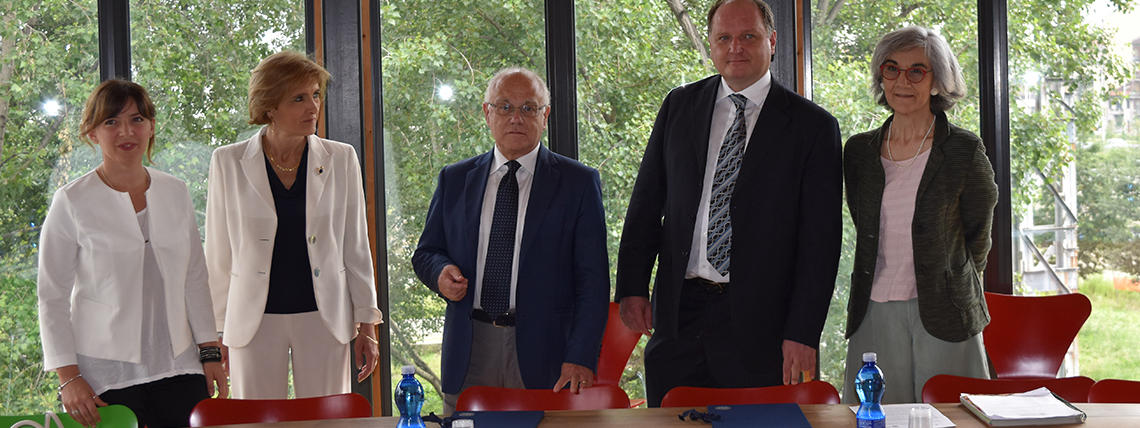
-
29 September 2016
OPEN POSITIONS AVAILABLE
- Fellowship for a position in the area of Technological Processing for micro and nanomanufacturing, involving development and implementation of technological processes in a cleanroom environment. Previous didactic knowledge or academic experience in the field of MEMS, microsensors, microfluidics and micromachining are preferred conditions.
For further info please contact matteo.cocuzza@polito.it -
5 May 2014
Il Chilab partecipa a Micronora 2014
Besancon (Francia), 23-26 Settembre 2014
Il Chilab partecipa all'edizione 2014 della Fiera Micronora, il Salone Internazionale delle Microtecniche (http://www.micronora.com/)
Ci potete trovare nella Hall C presso lo stand 611-613.
-
14 April 2014
Il Chilab in fiera ad A&T 2014

Torino - Lingotto Fiere, 16 - 17 Aprile 2014
Il Chilab partecipa all'edizione 2014 della Fiera Affidabilità e Tecnologie.
Ci potete trovare allo stand F5.
-
27 March 2014
Lancio del 1° Technology Day

9 Aprile 2014
Un pomeriggio di full immersion nella tecnologia sviluppata dal Politecnico di Torino. Sarà possibile visitare l'esposizione dei prototipi sviluppati dal CHILAB e dal LIM nell'ambito del progetto Target e assistere a una serie di interventi tenuti in tandem da ricercatori e imprese.
Si parlerà di:
- sistemi di attuazione di potenza
- dispositivi e sensori per il monitoraggio ambientale e agroalimentare
- sensoristica e controllo per la robotica.

-
29 November 2013
Alp Nano bio International School 4
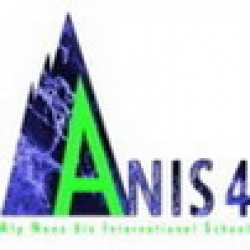
Alp Nano bio International School 4
January 27-31, 2014, Sterzing, Vipiteno (I)
Vigil Raber Conf. Hall
RNAome.0 – functions, methodologies and diagnosticsThe 4th edition of the International Winter School on Nano and Biotechnology, co-organized by Knowledge Department PAT (Trento), University of Trento – Centre for the Integrative Biology (UNITN-CIBIO), B. Kessler Foundation (FBK) and CNR – Institute of Biophysics – Unit at Trento (IBF-TN), is focused on the recent insights regarding coding and non-coding RNAs, their biology and function, with special attention on their implications in cancer biology and their importance for oncology translational research.
Continuing advances in transcriptomics are resulting in RNAs being recognized as fundamental regulators of gene expression at transcriptional and translational levels. However, there are still huge gaps in the understanding of the function of many RNA classes and it will be essential to discover the precise mechanisms by which these molecules are involved in cellular development, physiology and pathologies. Additionally the ANIS4 winter school will address advances in methodologies such as RNA imaging, analysis of RNA-associated protein complexes and RNA structural biology. The relevance of non-coding RNA expression and function in cancer will also be addressed and the development of new “on a chip” diagnostic techniques debated.
Aim of the school is to provide a common language platform to young scientists coming from different fields such as life sciences, chemistry, engineering and informatics where highly interdisciplinary approaches are required. The program will be structured to allow free time in the afternoon (snow-time) while lectures and other scheduled events will take place in the morning, late afternoon and evening. The lectures will be open to PhD students, postdoctoral fellows and others interested in this newly emerging field. Participants will have the opportunity to present their research in the form of a poster.
ANIS4 is promoted by the LaBSSAH Laboratory (Laboratory of Biomolecular Sequence and Structure Analysis for Health, www.labssah.eu) and the Newton consortium (www.nanonewton.it).






